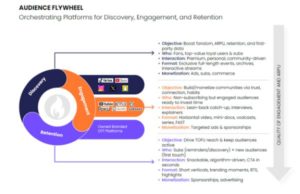JPEG XS is a new ISO format replacing uncompressed video
Over the last 20 years, the number of shared images and videos has considerably increased. In terms of resolution, we have moved from SD, HD to 4K – even 8K – and this is not about to stop. Higher frame rates, higher resolutions, more precision and higher dynamic range (HDR) imply a considerable increase in the amount of data to be transported on our networks. Bandwidth and storage are getting cheaper but this does not compensate the drastic increase of data to be transported or stored. Compression is therefore more than ever a fundamental step in distributing your video over the internet.
To smoothly manage the development of these technologies and the increase of manufacturers, it is essential to define interoperable solutions that work with other existing or future systems, without access restrictions. Especially in the context of communication media, we had to find a way to speak the same language and have similar formats. Standard Development Organizations (SDOs) play an important role to reach this interoperability requirement.
The need to set up a JPEG committee
In the 1990s, the International Standard Organization (ISO), the International Electrotechnical Commission (IEC) and the International Telecommunication Union (ITU) jointly created the Joint Photographic Experts Group (JPEG Committee) to specify image compression standards.
The first standard published in 1991 by the committee is also the most famous standard for the general public: the JPEG standard. It is very well known because it targets the consumer market and is universally deployed. Nowadays, the vast majority of images shared on the Internet and on social media are “JPEG”. This format is characterized by a very strong interoperability as the majority of devices and systems are equipped with software allowing encoding and decoding of this format. However, other image standards exist: JPEG 2000, JPEG XR, JPEG XT or the new JPEG XS, all published by this JPEG committee of experts. Each of these standards targets a specific market or use-cases, with specific requirements, leading to a global ecosystem of complementary specifications.

“XS” means “eXtra Small” and “eXtra Speed”
Among all the JPEG standard, JPEG XS, an international ISO standard published in 2019, simplifies video transport between devices. The main purpose of JPEG XS is to bring a transparent compression wherever uncompressed video was still in use, so as to decrease pressure on bandwidth requirements.
The JPEG XS standard can be defined as an intra-frame (visually) lossless image compression algorithm with very low latency and very low complexity. It enables video connectivity over lower bandwidth connections. The compression range is typically between 2:1 to 15:1 depending on the use case and video content. JPEG XS helps reduce power consumption of electronic devices, especially in the ultra-high definition video use-cases like 4K and 8K.
JPEG XS offers a scalable algorithmic latency, ranging from a small number of lines down to less-than-a-single-line for a combined encoder-decoder suite. JPEG XS is characterized by its robustness to multi-generation, meaning there is no significant quality degradation even after 10 encoding/decoding cycles. Multi-platform interoperability is also one if its key feature: JPEG XS allows for highly optimized implementations on CPU, GPU but also on hardware platforms like FPGA and ASIC.
The JPEG XS mezzanine codec standard can be applied wherever uncompressed video is currently used.
SOME EXAMPLES OF USE CASES for JPEG XS
- In VIRTUAL REALITY, the transmission latency must not exceed one microsecond between the headset and the video source to preserve the experience. JPEG XS enables this wireless transmission, offers significantly higher video resolutions and eliminates the need for wires.
- In LIVE PRODUCTION & AV over IP, the LAN or WAN infrastructures (cabling, network, devices…) usually cannot exceed 1G, 2.5G or 10Gbps. With a minimal latency, JPEG XS will use the bandwidth that is available today to carry a single or multiple HD, 4K and 8K streams without delay!
- In all types of MOBILE DEVICES, video transmission between electronic chips consumes a lot of energy, especially when the video quality is high. By reducing the amount of data to be transmitted, JPEG XS considerably limits energy consumption and thus extends the battery life.
- AUTONOMOUS CARS rely heavily on image and video sensors to operate reliably and avoid accidents. Even a delay of only a fraction of a second could be critical. JPEG XS compresses images in such a way that this latency is reduced to an absolute minimum – around a microsecond – while ensuring lossless quality, both for human vision and obstacle detection based on artificial intelligence.
- JPEG XS guarantees a live video signal from DRONES to pilots, which is crucial to avoid errors.
- Given the rapid growth of 5G & WIRELESS NETWORKS, JPEG XS aims to become the standard for improving video quality, reducing latency and simplifying wireless transfer. All these requirements are significant advantages for online GAMES & LIVE STREAMING.
What are the file formats for JPEG XS?
JXS is the file extension for storing single image files. But the JPEG XS standard can be encapsulated in all the most common images/videos transport/container formats such as HEIF, MP4, MXF, MPEG2-TS, RTP, SMPTE 2110-22,…
The new JPEG XS standard can already be opened and manipulated within most of these containers thanks to Adobe Premiere Plugin or FFmpeg Add-on developed by intoPIX on top of our FastTICO-XS SDK.
Discover TICO-XS, the JPEG XS standard engineered by intoPIX
Being the proponent and project leader of this “JPEG XS” international ISO standard technology, intoPIX has an unequaled knowledge of the standard and has developed optimized implementations. These implementations are branded under the name TICO-XS, where TICO just means TIny COdec.
IntoPIX has built a wide range of implementations, optimizing every aspect of JPEG XS and meeting all of its customers’ requests while remaining compliant with the JPEG XS standard. intoPIX offers visually lossless compression capabilities exceeding the JPEG XS reference, with an extremely small footprint in ASIC and FPGA and blazingly fast performances on CPU & GPU. It has integrated innovative processing for screen/desktop content applications and also developed a mode that can operate much more faster on software.
Interested in learning more? Contact our experts now!









